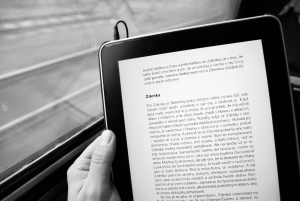BATTLES TO BRIDGES: U.S. Strategic Communication and Public Diplomacy after 9/11
Reviewed by Philip Seib

The September 11, 2001 attacks stirred Americans to consider the possibility that the United States is not the center of the universe and that there might be, as R.S. Zaharna notes, a “connection between America‘s image and its security.” Doing something about this, said 9/11 Commission co-chair Lee Hamilton, is “how we stop them from coming here to kill us.”
Fraught words, as were many post-9/11 declarations about America and the world. Zaharna, a highly regarded public diplomacy scholar who teaches at American University, relies on a calmer approach in Battles to Bridges, her concise but wide-ranging appraisal of U.S. public diplomacy during the past decade.
Her outlook is valuably broad, recognizing that public diplomacy “is a political and communication activity” and must “be strategically aligned to the political and communication dynamics of the international arena in order to be effective.” When conventional insular American communication values are determinative in implementing U.S. public diplomacy, even the best-intentioned efforts go askew.
Zaharna deals with this, as with other issues in the book, with resolute even-handedness. She writes that post-9/11 public diplomacy efforts, such as Radio Sawa and Al Hurra television, were “extremely innovative, ambitious, and expansive,” and “reflected the best and the brightest of American communication professionals.” But on the next page, she writes of these efforts that “rather than winning hearts and minds, the initiatives appeared to be doing the opposite.” Underscoring this, she quotes Rami Khouri, editor of Lebanon‘s Daily Star: “Where do they get this stuff from? Why do they keep insulting us like this?”
At the heart of this failure, writes Zaharna, was the tendency of U.S. foreign policy officials to value slickness above substance. She notes that ―U.S. officials appeared to focus on improving the presentation of their messages – but not the underlying relationships “between America and the people in the Arab and Islamic countries.” Public diplomacy raises expectations among those it reaches, but it cannot succeed unless it is in synch with policy. Even remarkable public diplomacy moments, such as Barack Obama‘s 2009 Cairo speech, evaporate quickly unless they are supported by meaningful policy initiatives.
One of the most important sections of Zaharna‘s book is her thorough discussion of network communication and its role in the jump from old to new public diplomacy. Old public diplomacy focused on message content, while new public diplomacy emphasizes message exchange, which networks can facilitate. Zaharna notes that the pervasiveness of networks today renders obsolete the Cold War-style, head-to-head “information battles.” And yet, she writes, after 9/11 U.S. public diplomacy ―resurrected and vigorously pursued an information battle strategy borrowed from the Cold War –“without first assessing whether that grand strategy was still viable.”
She also examines the transformative power of globalized communication, pointing out that “today, the notion of geographic segmented audiences has become problematic.” In the world of borderless media, distinctions between domestic, regional, and international publics have drastically diminished. That might seem obvious, but the continued existence of the Smith-Mundt Act is just one piece of evidence that there are still those who believe they can hold back the tide.
Battles to Bridges also provides solid analysis of nation branding, the distinctions between propaganda and public diplomacy, the importance of ethics, and other topics that will prove valuable to experienced practitioners and scholars as well as to the public diplomacy novice. With this thoughtful, accessible book, Zaharna makes an important contribution to the study and practice of public diplomacy.
BATTLES TO BRIDGES: US Strategic Communication and Public Diplomacy after 9/11
Rhonda S. Zaharna
Palgrave Macmillan, March 2010
IBSN: 0-230-20216-0
Size 5 1/2 x 8 1/4, 240 pages
Tags
Issue Contents
Most Read CPD Blogs
-
March 22
-
February 23
-
February 22
-
April 1
-
April 11
Visit CPD's Online Library
Explore CPD's vast online database featuring the latest books, articles, speeches and information on international organizations dedicated to public diplomacy.









Add comment